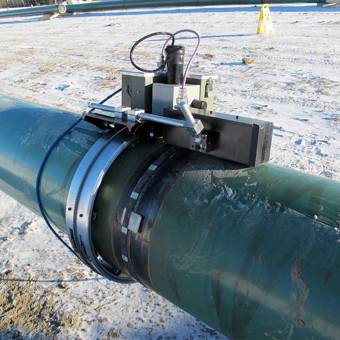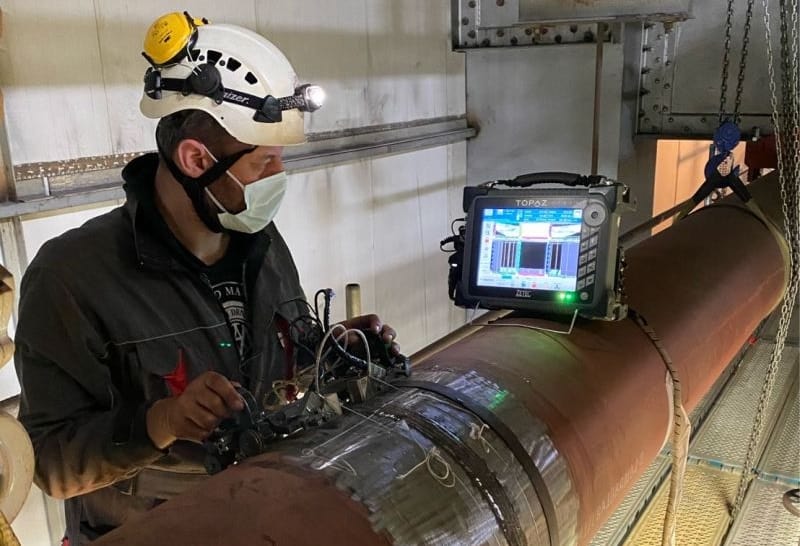Make Best Use Of Effectiveness: Proactive Pipeline Welding Inspection Approaches
Make Best Use Of Effectiveness: Proactive Pipeline Welding Inspection Approaches
Blog Article
Vital Pipe Welding Examination Tips for Top Quality Guarantee
Exactly how can one guarantee the top quality of these welds that connect the pipeline sections? By comprehending the important pipeline welding inspection ideas, experts can avoid possible risks, reduce costly repair services, and support the reliability of these essential infrastructures.

Relevance of Welding Evaluation
Welding examination plays a crucial function in making certain the architectural honesty and safety of pipeline systems. By diligently analyzing welds, examiners can identify any type of problems or blemishes that could endanger the stability of the pipeline. These examinations are necessary for avoiding leakages, tears, and various other possibly catastrophic failings that might lead to environmental damage, economic losses, and even death.
The value of welding inspection can not be overstated, as the top quality of welds directly affects the total efficiency and longevity of the pipeline. Via non-destructive testing methods such as aesthetic assessment, ultrasonic testing, radiography, and magnetic bit testing, assessors can find flaws that may not show up to the nude eye. By determining and attending to these concerns at an early stage, welding evaluation assists to make sure that pipes fulfill market standards and governing needs.
Inevitably, welding examination is an essential facet of quality control in pipeline upkeep, repair service, and construction (Pipeline Welding Inspection). By maintaining rigorous examination standards, industry professionals can minimize dangers and promote the safety and reliability of pipeline systems
Common Welding Flaws
Among the challenges encountered in pipeline welding, usual issues can considerably impact the structural stability and efficiency of the welded joints. Some of one of the most common welding defects consist of absence of combination, porosity, fractures, insufficient penetration, and misalignment. Absence of fusion occurs when there is insufficient bonding between the weld steel and the base metal, leading to a weakened joint. Porosity, identified by gas pockets within the weld, can lower the stamina and make the weld at risk to corrosion. Cracks in the weld can circulate in time, jeopardizing the architectural integrity of the pipe. Incomplete penetration happens view when the weld metal does not completely permeate the joint, resulting in a weak bond. Imbalance, where the weld bead is not effectively focused, can bring about stress focus points and potential failure. Detecting and addressing these usual flaws with comprehensive assessment and top quality control procedures are crucial for ensuring the integrity and security of pipe welds.
Evaluation Techniques for Pipelines

Non-destructive screening (NDT) strategies such as radiographic screening, ultrasonic testing, magnetic fragment testing, and fluid penetrant testing are typically made use of in pipeline welding inspection. Aesthetic assessment is also vital in pipe welding to determine any kind of visible flaws or suspensions. In addition, automatic evaluation methods using innovative innovations like drones and robotics are progressively being utilized to enhance the efficiency and accuracy of pipeline examinations.
Making Sure Quality Control Specifications
To support strict high quality guarantee criteria in pipe construction, meticulous adherence to developed industry protocols and standards is necessary. Quality assurance in welding processes calls for an extensive technique incorporating various stages of pipe construction. Implementing a durable high quality administration system that consists of regular audits and testimonials can better enhance the overall high quality assurance criteria in pipe welding.
Protecting Against Expensive Fixings
Given the crucial value of keeping rigorous high quality guarantee requirements in pipeline More hints building, a positive method to protecting against pricey repair services is necessary. Routine maintenance checks and tracking of ecological aspects that could affect the stability of the pipe are also essential in protecting against costly repair work. By investing in preventative steps and focusing on quality guarantee at every stage of the pipe welding procedure, business can lessen the risk of expensive repairs and make sure the long-lasting reliability of their framework.
Verdict
Finally, adherence to correct welding examination methods is important for guaranteeing the quality and stability of pipelines. By determining usual welding flaws and implementing detailed examination procedures, costly fixings can be avoided, and quality guarantee standards can be met - read review Pipeline Welding Inspection. It is critical for pipeline welders to focus on examination treatments to preserve the security and dependability of the facilities they are working with
The relevance of welding inspection can not be overemphasized, as the quality of welds straight impacts the total performance and long life of the pipe. Non-destructive screening (NDT) methods such as radiographic screening, ultrasonic screening, magnetic bit screening, and liquid penetrant testing are frequently used in pipe welding assessment. Visual inspection is likewise crucial in pipe welding to identify any kind of noticeable issues or suspensions. Furthermore, automatic evaluation techniques using advanced technologies like robotics and drones are significantly being utilized to improve the efficiency and precision of pipe evaluations.In conclusion, adherence to correct welding evaluation techniques is essential for ensuring the top quality and stability of pipelines.
Report this page